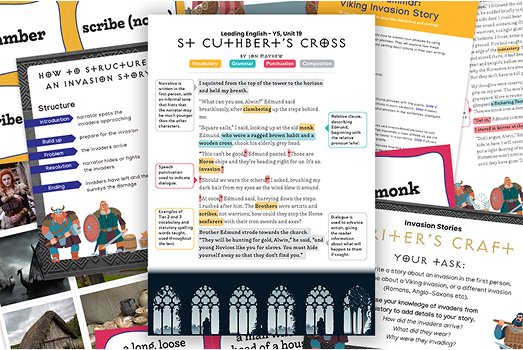Too often, writing assessment ends up as a snapshot of the finished product. A judgement after the fact. Final pieces are marked, frameworks are filled, but little has actually shifted for the pupil – or the teacher.
And when assessment becomes retrospective, it brings problems:
- Opportunities to intervene are missed
- Feedback arrives too late to make a difference
- Teachers are unclear on what’s really developing
In short: assessment becomes about proving what happened, not improving what comes next.
From ‘what are they doing?’ to ‘what are they learning?’
I once worked with a headteacher who banned staff from describing what pupils were doing. Every teacher had to talk instead about what pupils were learning. At the time it felt pedantic – but it was powerful.
That shift in language sharpened planning, feedback and curriculum design. Teachers became more precise about intent, more aware of progression and more focused on impact.
Because if we can’t say clearly what pupils are learning, how can we assess whether they’ve learned it?
The writing dilemma
Almost every pupil will have a go at writing a narrative if you ask them. But will they learn from it? That depends on:
- what was taught
- what was noticed
- how feedback was used
A full book of writing may look impressive, but it doesn’t necessarily show what’s developing beneath the surface.
That’s why the new Writing Framework is clear: writing is a process, not just a product. And assessment has to reflect that.
Formative assessment done well means:
- Knowing the specific skill or knowledge in focus
- Creating space to notice it emerging
- Responding in the moment to strengthen it
As Dylan Wiliam reminds us: “The purpose of assessment is to improve, not to prove.” It’s not about extra paperwork – it’s about deliberate noticing, in the lesson, when it really matters.
Nine ways to make AfL work in writing
1. Be precise about what’s being taught
Broad objectives like “writing a report” don’t help teachers or pupils. What matters is the precise skill in focus – for example, “using passive voice for objectivity”. Being specific sharpens modelling and allows leaders to see whether teaching is really aligned with curriculum intent. Vague goals produce vague feedback; precision builds progress.
2. Embed formative checkpoints during units
Don’t wait until the final piece. Use short, focused tasks – improving a paragraph, rewriting a sentence, responding to a prompt – to see whether key skills are landing. These checkpoints give teachers a chance to intervene while learning is live, and they give subject leads a clearer sense of what’s actually being developed.
3. Use pupil talk as formative data
What pupils say about their writing can be more revealing than what they write. When they can explain the why behind their decisions, it surfaces understanding you might not see in the text itself. Build in routines: paired discussion during drafting, sentence stems to explain choices, teacher-pupil conferencing. These give leaders and teachers a richer picture of what’s really being learned.
4. Redraft with purpose, not polish
Redrafting should be about deliberate practice, not just copying out neatly. Instead of “write it up in best,” ask pupils to revisit one specific aspect – tightening cohesion, reworking paragraph openings, strengthening vocabulary choices. This makes redrafting a chance to deepen learning, while also providing clear evidence of development over time.
5. Focus on feedback during writing, not after
Feedback is most powerful when it shapes learning in the moment. That means building pauses into shared writing, holding quick “live edit” discussions or rehearsing sentences on mini whiteboards before committing them to the page. For leaders, this is about supporting teams to move from reactive marking to responsive teaching – improving outcomes without increasing workload.
6. Make success criteria developmental
Tick-box criteria encourage compliance, not learning. Instead, co-construct criteria that help pupils think like writers. For example, “used repetition to emphasise urgency” gives pupils a sense of purpose and craft. It also gives leaders a clearer lens to see whether teaching is building real understanding of writing decisions, rather than just feature-spotting.
7. Moderate for insight, not just levelling
Ask questions like: “What’s been taught here?”, “What’s the next step?”, “What supported their progress?”. When used this way, moderation becomes a tool for leadership insight and teacher development, not just for quality assurance.
8. Align assessment with purpose and audience
Effective writing reflects the writer’s intent. Use tasks with real audiences and purposes to help pupils make authentic choices about tone, structure and vocabulary. Leaders should ensure assessment reflects effectiveness for purpose, not just technical accuracy.
9. Use assessment sheets to plan, not just record
Avoid assessment as paperwork. Instead, use review notes to highlight misconceptions, identify exemplars and inform upcoming CPD or planning. Leaders can use this to spot patterns across cohorts or classes and shape meaningful next steps.
At Leading English, we work with schools and trusts to help leaders build a culture where assessment is live, responsive and genuinely developmental.





